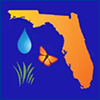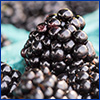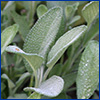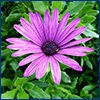The Neighborhood Gardener – November

FFL Gardening Apps Update
 Gardening decisions are now easier and more accessible with mobile web tools from the UF/IFAS Florida-Friendly Landscaping™ (FFL) program. You might have heard of the Florida-Friendly Landscaping™ Plant Guide, with details and photos of over 400 Florida-Friendly plants. But did you know that it's now free? The FFL program also has apps that can help you design a butterfly or bee garden, get personalized information on Florida's fertilizer rules, and help identify toxic plants. All of these apps are now free and designed to work on both mobile devices and desktop computers; all you need is internet access. You can get them at the FFL website.
Gardening decisions are now easier and more accessible with mobile web tools from the UF/IFAS Florida-Friendly Landscaping™ (FFL) program. You might have heard of the Florida-Friendly Landscaping™ Plant Guide, with details and photos of over 400 Florida-Friendly plants. But did you know that it's now free? The FFL program also has apps that can help you design a butterfly or bee garden, get personalized information on Florida's fertilizer rules, and help identify toxic plants. All of these apps are now free and designed to work on both mobile devices and desktop computers; all you need is internet access. You can get them at the FFL website.
Growing Plants for Dye
 Plants have a long history of being used for their staining and coloring properties, but modern chemistry quickly replaced plant-based dyes. Today, there's a growing interest in sustainable color, as consumers turn away from non-renewable—and sometimes toxic—synthetic dyes. The Florida home garden can be a starting point for your own plant dyes: onions, berries, hibiscus flowers, and other plants can be used. This article from Gardening Solutions has more plants to "dye for."
Plants have a long history of being used for their staining and coloring properties, but modern chemistry quickly replaced plant-based dyes. Today, there's a growing interest in sustainable color, as consumers turn away from non-renewable—and sometimes toxic—synthetic dyes. The Florida home garden can be a starting point for your own plant dyes: onions, berries, hibiscus flowers, and other plants can be used. This article from Gardening Solutions has more plants to "dye for."
Five Herbs for Fall
 With the holiday season upon us, many cooks will be pulling out the recipe cards (or cooking apps) for festive dishes. Luckily, it's also an ideal time to plant culinary herbs to enhance your meals. We have five autumn favorites you can plant now, including the classic quartet: parsley, sage, rosemary, and thyme. Read more about all five herbs on Gardening Solutions.
With the holiday season upon us, many cooks will be pulling out the recipe cards (or cooking apps) for festive dishes. Luckily, it's also an ideal time to plant culinary herbs to enhance your meals. We have five autumn favorites you can plant now, including the classic quartet: parsley, sage, rosemary, and thyme. Read more about all five herbs on Gardening Solutions.
Wendy's Wanderings
 Looking at the calendar we see it is fall in Florida. It is hard to feel in the autumn mood of scarves, boots, and pumpkin spice lattes when temperatures are still in the 80s. But if you look closely there are changes happening in our trees. While the rest of the country is saying farewell to fall color, our deciduous hardwoods are just beginning to turn. Read on for examples of Florida's native fall colors.
Looking at the calendar we see it is fall in Florida. It is hard to feel in the autumn mood of scarves, boots, and pumpkin spice lattes when temperatures are still in the 80s. But if you look closely there are changes happening in our trees. While the rest of the country is saying farewell to fall color, our deciduous hardwoods are just beginning to turn. Read on for examples of Florida's native fall colors.
Plant of the Month: Greens
 A staple of traditional Southern cooking, "greens" is a general term for a group of plants including collards, kale, mustard, and turnip greens. Easy to grow and very nutritious, greens are rich in vitamins and a good source of calcium, potassium, folate, and iron. Generally considered cool-season vegetables, the time to plant these in Florida is August through February. This article from Gardening Solutions covers six greens that grow well in Florida gardens.
A staple of traditional Southern cooking, "greens" is a general term for a group of plants including collards, kale, mustard, and turnip greens. Easy to grow and very nutritious, greens are rich in vitamins and a good source of calcium, potassium, folate, and iron. Generally considered cool-season vegetables, the time to plant these in Florida is August through February. This article from Gardening Solutions covers six greens that grow well in Florida gardens.
November in Your Garden
 Create your own display of fall color with cool-season flowers. Depending on where you are in the state, add pansy, viola, impatiens, or cape daisy (pictured). Divide and replant overgrown perennials and bulbs now so that they establish before the cold weather arrives. Turn off irrigation systems and water only if needed; plants need less supplemental watering in cooler weather.
Create your own display of fall color with cool-season flowers. Depending on where you are in the state, add pansy, viola, impatiens, or cape daisy (pictured). Divide and replant overgrown perennials and bulbs now so that they establish before the cold weather arrives. Turn off irrigation systems and water only if needed; plants need less supplemental watering in cooler weather.
For more month-by-month gardening tips, check out the Florida Gardening Calendar. Three different editions of the calendar provide specific tips for each of Florida's gardening regions—North, Central, and South.
What's Going On?
If your Master Gardener Volunteer program or Extension office is having an event, be sure to share it with us.

